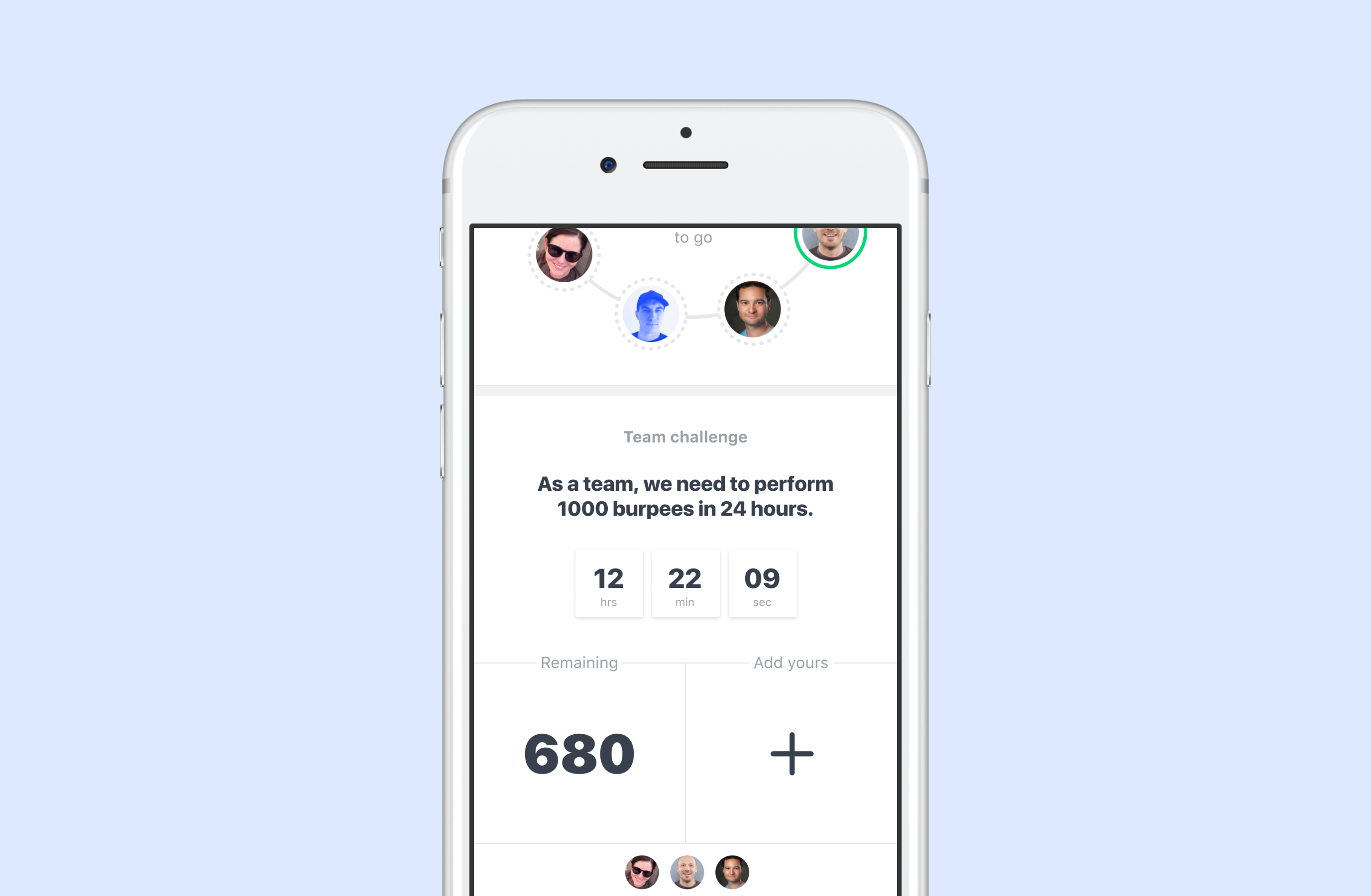
Chorus Team Challenges
- Interaction design
- Visual design
- Product strategy
On fitness teams with mixed interests, it was easy to feel disconnected from each other. How might we help individuals on a team with different interests feel like they belong to one cohesive team?
We began with a pile of ideas for how to solve this problem, some coming from user interviews, some from ideas we'd bat around during lunch or coffee. Ultimately, we focused on the idea of teamwork as a way to experiment. As a bonus, we'd validated similar concepts in some group-messing prototypes.
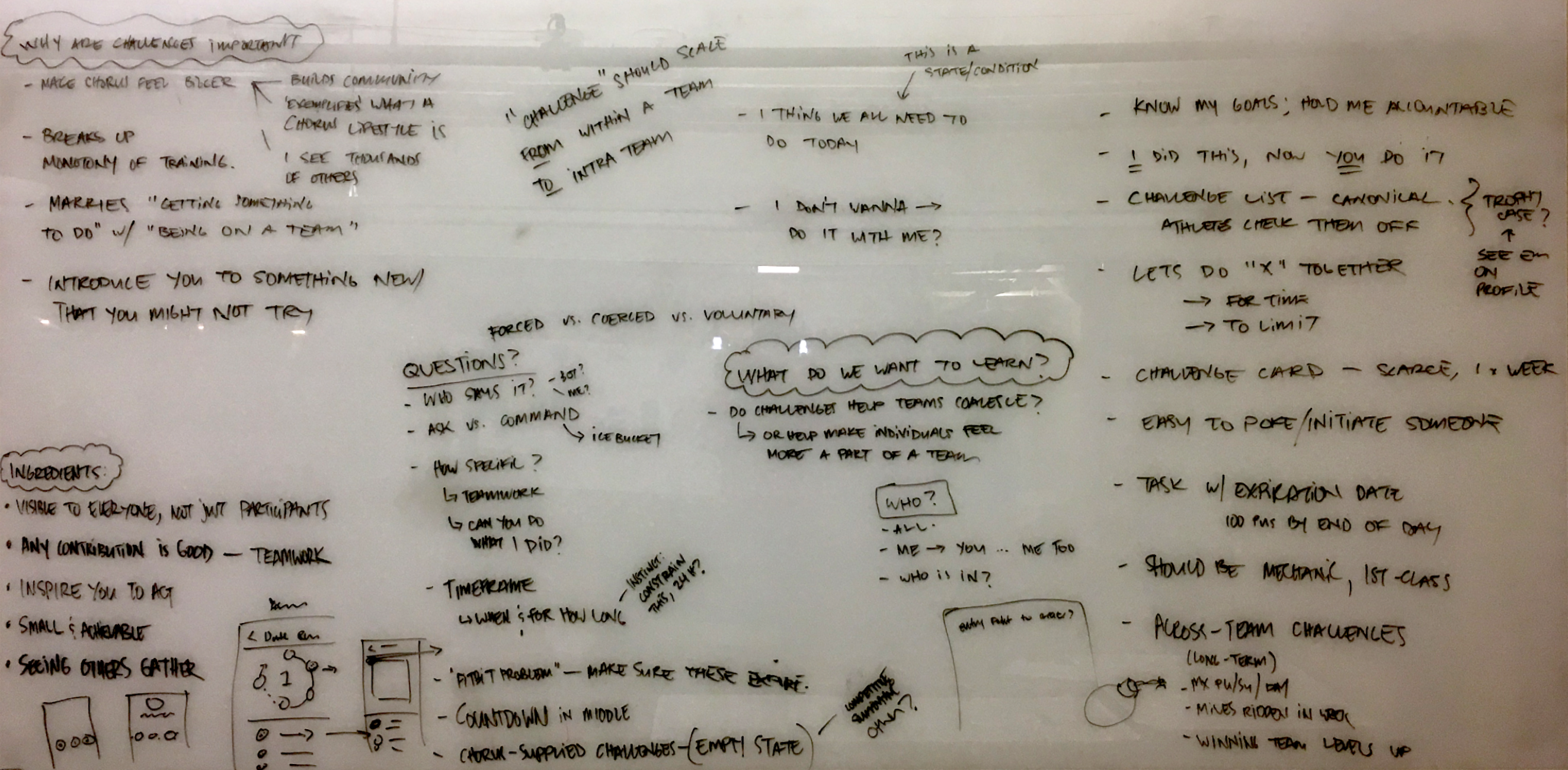
Our hypothesis was that teams would feel more cohesive if we provided a way for everyone on the team to work together, in this case, on a challenge. Challenges could be things like working together to climb 200 flights of steps, or do 500 sit-ups as a team.
Prior to building anything, we framed out the most important parts of the experience, which broke out into 4 basic parts. We needed the ability to:
- Create a challenge
- See when one is happening
- Contribute to a challenge
- Follow a challenge's progress
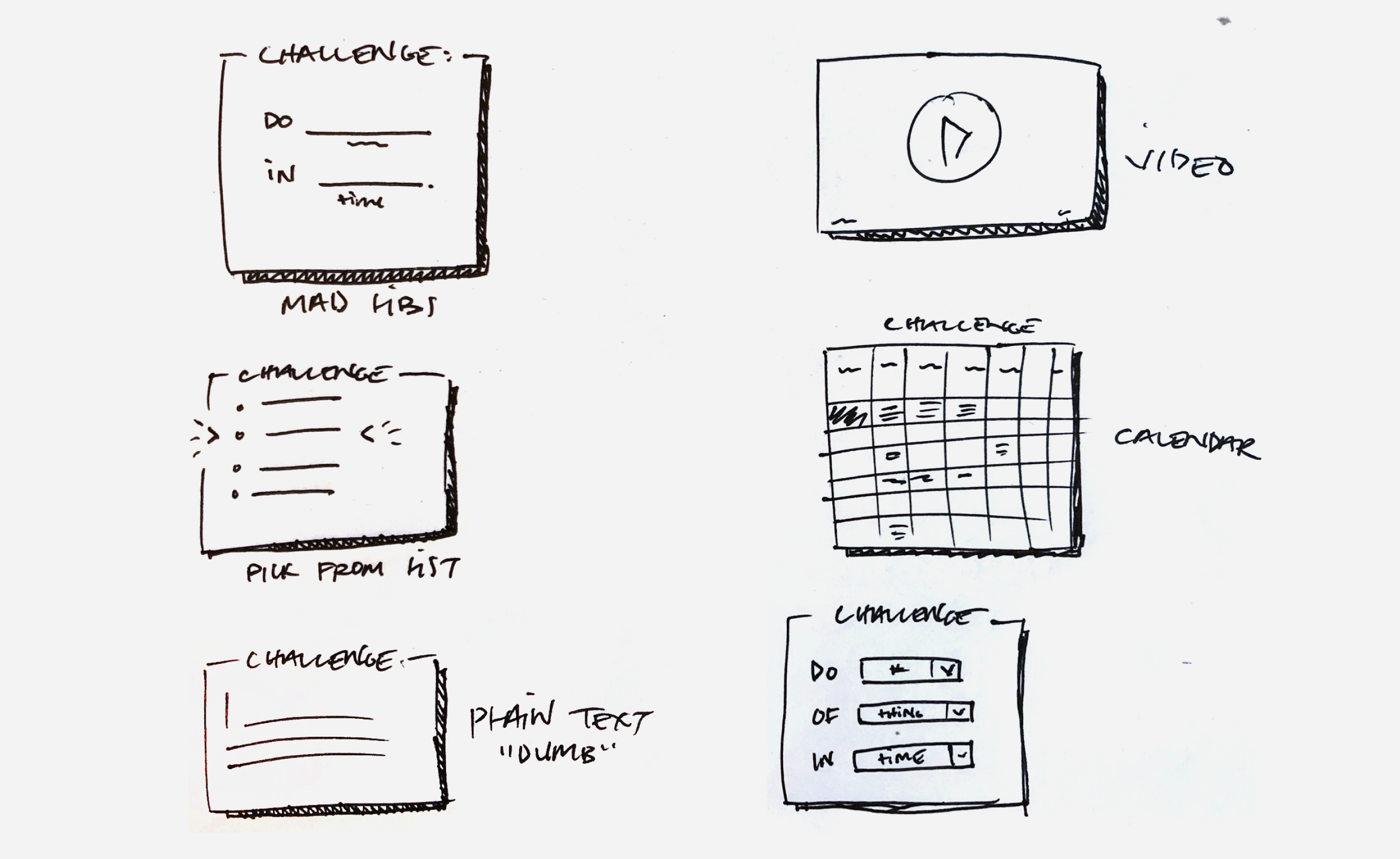
Focusing on the first step – creating a challenge – would uncover lots of structural questions that would ultimately inform the design. Some quick sketches helped us to better understand a few things:
- That we'd prefer the flexibility of letting teams write their own challenges, rather than being assigned ones by Chorus.
- Some kind of structure would be important to the challenges, especially if we wanted to do things like track and display the team's contributions to the challenge.
- To help us focus, we'd start with challenges that worked to chip away at a number, instead of open-ended challenges. Think: 'perform 500 sit ups' instead of 'how many sit-ups can we do?'
From there, I focused on the "create" part of the experience to help me understand how we'd ultimately structure these challenges.
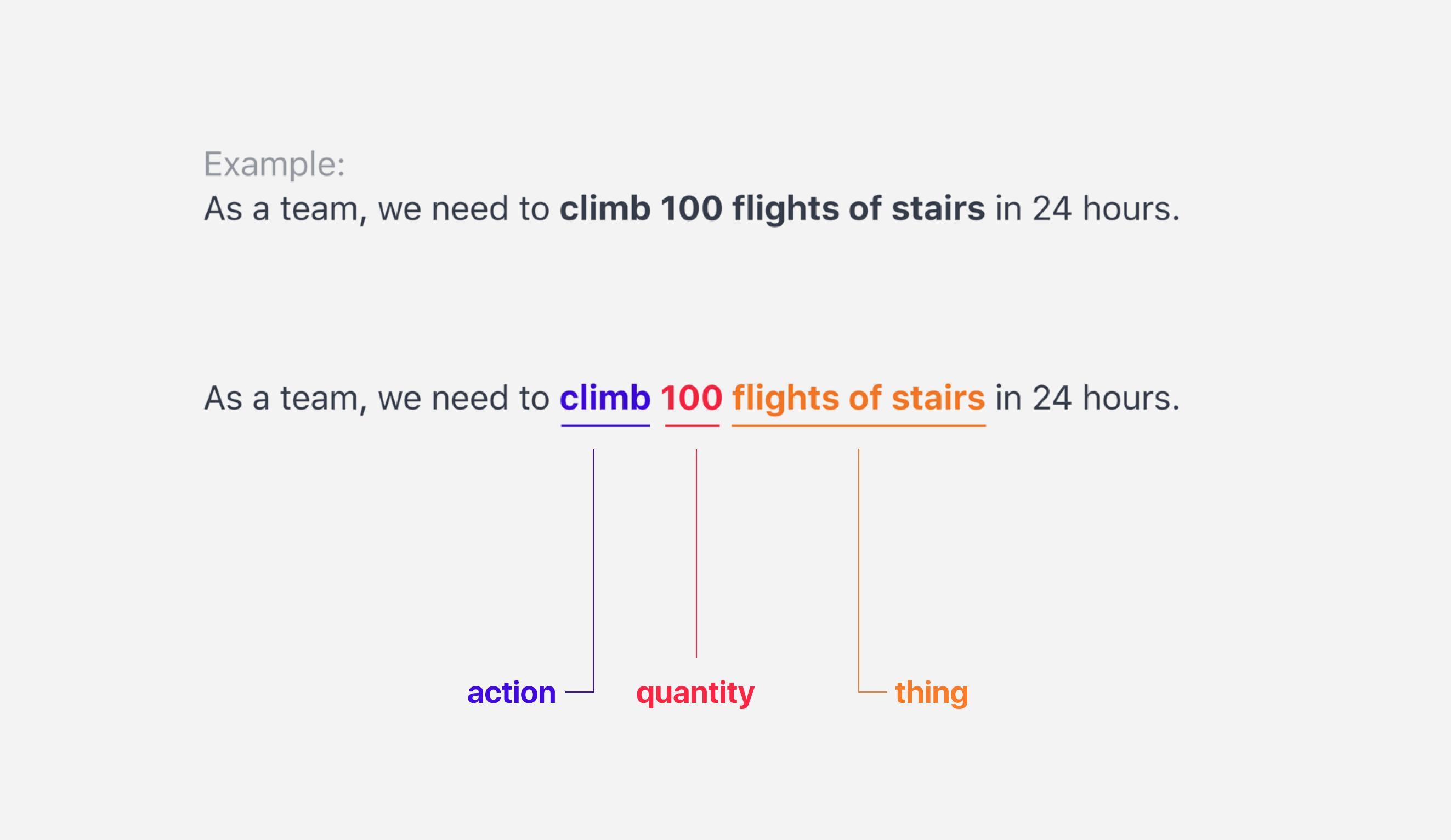
The structure is deceptively complex, especially if we wanted people to be able to compose a wide variety of challenges. Editable text proved to be a great way to present the structure in an understandable way, but also to edit them.
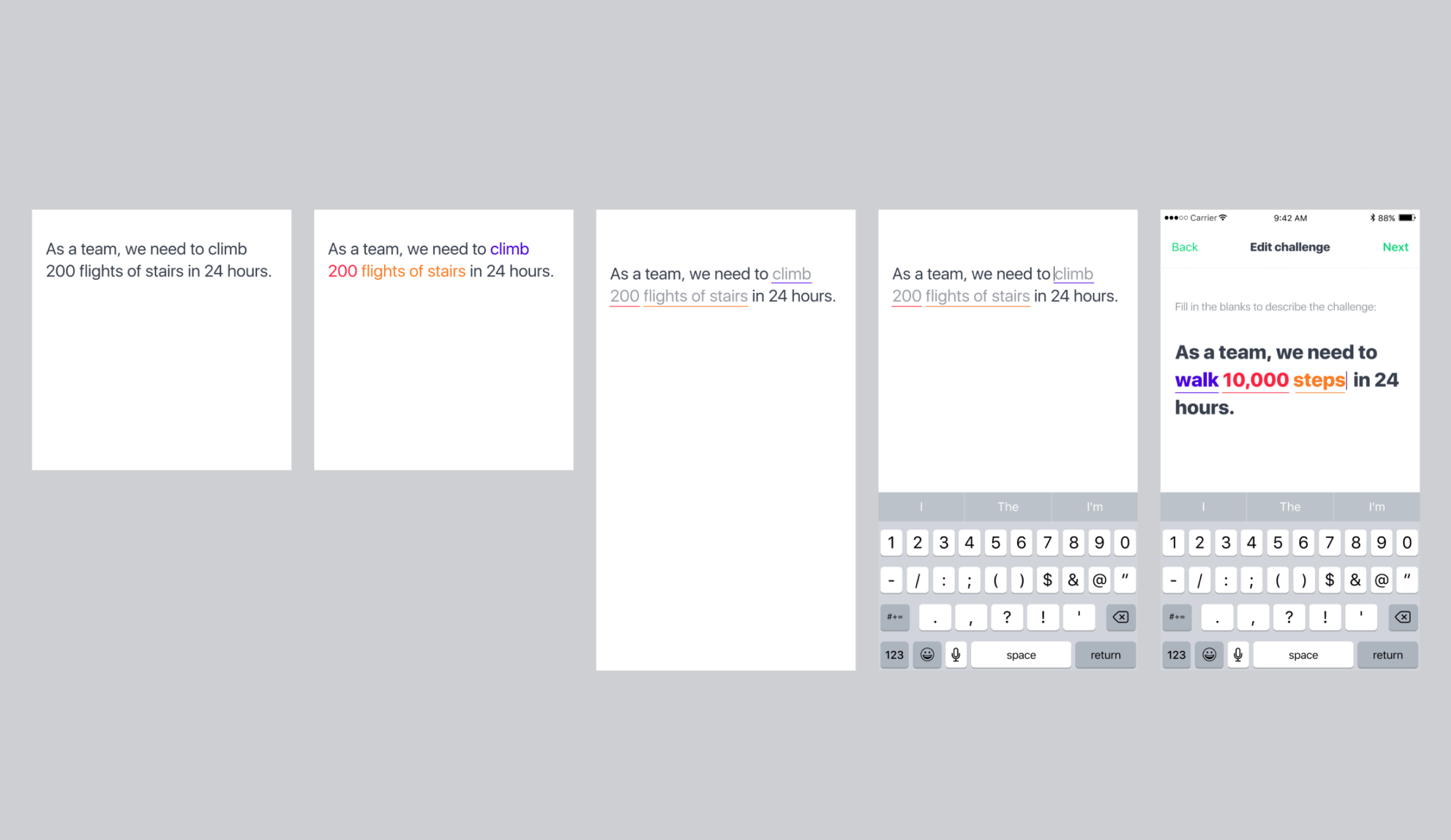
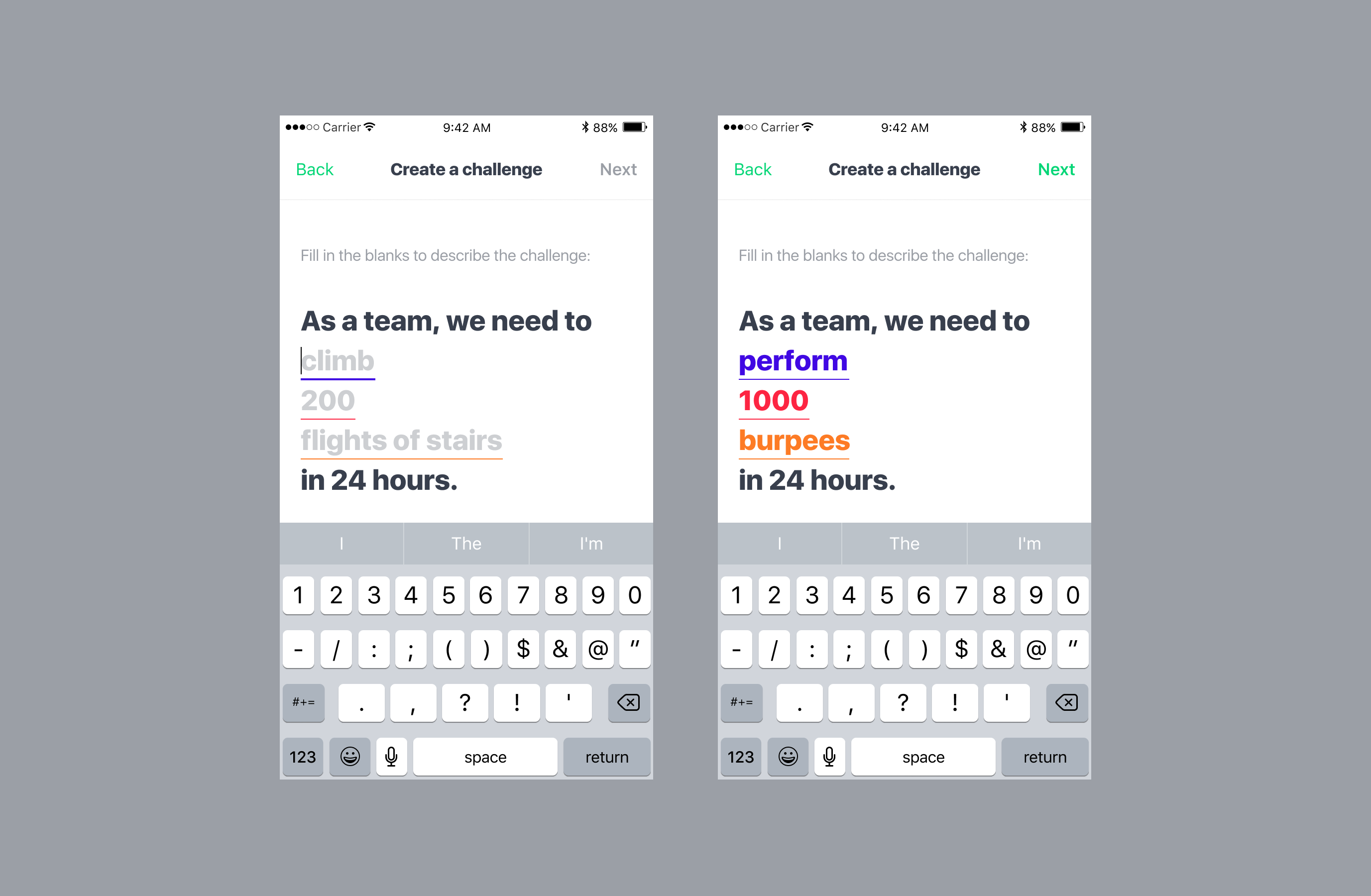
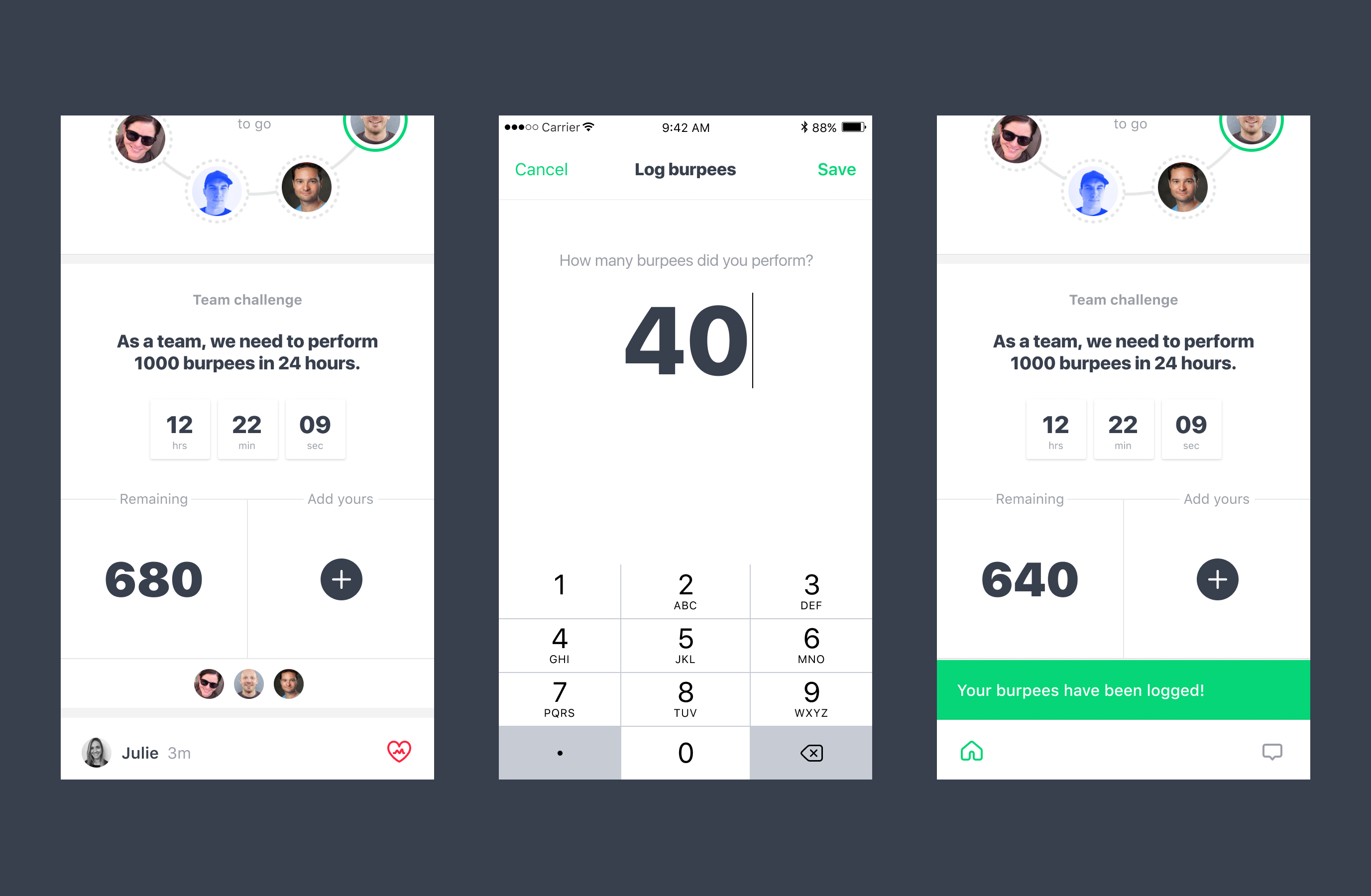
We followed up with qualitative interviews, which validated our initial hypothesis with gems like, "[challenges] make me feel as though I'm contributing to my team." We continued to iterate on this feature, addressing feedback like better notifications and the ability to edit challenges.